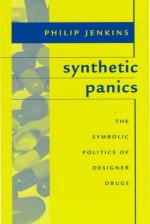|
This section contains 806 words (approx. 3 pages at 300 words per page) |

|
Designer drugs are synthesized chemical analogues of known, dangerous drugs; they are designed to produce pharmacological effects similar to the drugs they mimic. In the pharmaceutical industry, the development of new drugs often utilizes principles of basic chemistry, so that the structure of a drug molecule may be slightly altered to change its pharmacological activity. For therapeutic purposes, these strategies have had a long and successful history; for medical pharmaceutics, many useful new drugs or modifications of older drugs have resulted in improved health care. The principle of structure-activity relationships has been applied to many medically approved drugs in the marketplace, especially in the search for painkillers—nonaddicting opioid analgesics.
The clandestine production of new street drugs is, however, intended to avoid federal regulation and control. This practice can often result in the appearance of unknown substances, with wide-ranging degrees of purity, which have the potential...
|
This section contains 806 words (approx. 3 pages at 300 words per page) |

|


